Tattoos are a great way to express yourself, but what happens when you decide that you no longer want your tattoo? That’s when the process of tattoo removal comes into play.
It’s important to know how long it takes to remove a tattoo, as the process can be quite lengthy and requires dedication and patience. Here, you’ll find answers to frequently asked questions about tattoo removal and useful tips for making the process go as smoothly as possible.
How Long Does It Take to Get Laser Tattoo Removal?
Skin Tone
Depending on the tattoo ink and skin type, laser tattoo removal can take anywhere from a few sessions to more than 10. Generally speaking, tattoos with light colors are easier to remove than those with darker pigments, such as black or blue. On average, laser treatment of tattoos takes 6-8 weeks for complete removal. However, the number of treatments needed may increase depending on the complexity and size of the tattoo. [1]
Tattoo Location
The location of the tattoo also affects how long it will take to remove. Tattoos on more visible parts of the body, such as the face and neck, may take longer to fade since there is less skin tissue for the laser to penetrate. On the other hand, tattoos on areas with thicker layers of skin like the arms and legs are much easier to treat and require fewer treatments. [1]
Ink Types
Different types of tattoo inks may also require different laser treatments. For example, tattoos with organic dyes tend to take longer to remove since the ink is embedded deeper into the skin tissue. Professional laser technicians typically use multiple laser wavelengths and settings to break down different types of pigments found in a tattoo. [1]
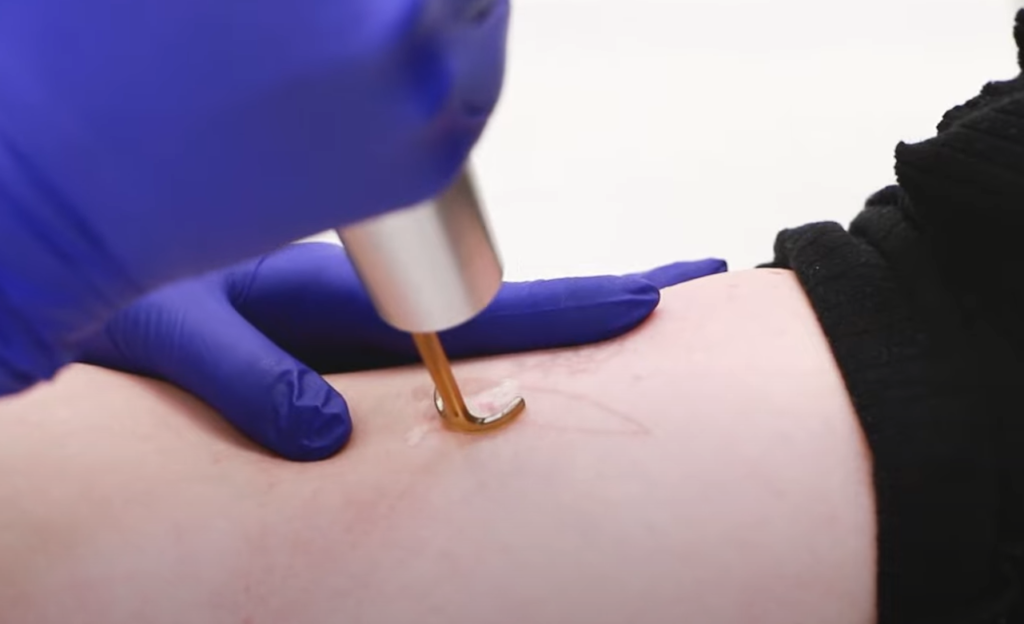
Aftercare
Once your laser treatment is complete, proper aftercare is essential for successful tattoo removal. This includes avoiding direct sunlight on the area, using sunscreen when necessary, and keeping the area moisturized with a mild lotion or cream. Additionally, it’s important to follow up with your doctor at least once every six weeks to check the area for signs of infection or other complications. [1]
Age of Tattoo
The age of a tattoo can also affect how long it takes to remove. Generally speaking, tattoos that are newer will take less time and fewer treatments to fade than older tattoos. In addition, new laser technologies allow for faster treatment times than traditional methods. [1]
Depth of Ink
The depth of the ink in the skin is a major factor when it comes to tattoo removal. Generally speaking, tattoos with deeper pigments will take longer to remove than those with superficial pigments. In addition, tattoos on parts of the body that have thicker layers of the skin may require more laser treatments compared to tattoos on thinner areas. [1]
Size of Tattoo
Color of Ink
The color of the ink can also affect how long it takes to remove a tattoo. Generally speaking, tattoos with lighter colors tend to take fewer treatments than those with darker pigments such as black or blue. In addition, some laser wavelengths are specifically designed to target certain pigment colors which may result in faster treatment times. [1]
Immune Health
Lastly, your immune system plays an important role in the tattoo removal process. Generally speaking, people with a healthy immune system tend to have faster and more successful tattoo removal than those with compromised immunity. [1]
Smoking Cigarettes
Smoking can also reduce the effectiveness of laser tattoo removal. Cigarettes contain nicotine, which constricts blood vessels and reduces circulation to the skin. This can slow down the healing process and make it more difficult for the laser to penetrate deep enough into the skin to remove the pigment. For best results, it is recommended that you quit smoking before and during the tattoo removal process. [1]
Sun Exposure
In addition, sun exposure can reduce the effectiveness of laser tattoo removal. Sunlight can cause tattoos to fade on its own but it also increases the risk of infection and skin damage when combined with laser treatments. It is important to avoid direct sunlight and use sunscreen on the treated area in order to protect your skin during the healing process. [1]
How Does Laser Removal Work?
The Importance of Q-Switching Lasers
To safely and effectively remove a tattoo, it’s important to use a Q-switched laser. Q-switched lasers are the most advanced technology for tattoo removal and are available in different wavelengths that target specific colors of ink. A certified technician will use a Q-switched laser to break up the pigments in a tattoo, allowing your body to gradually eliminate them over time through its natural healing process.
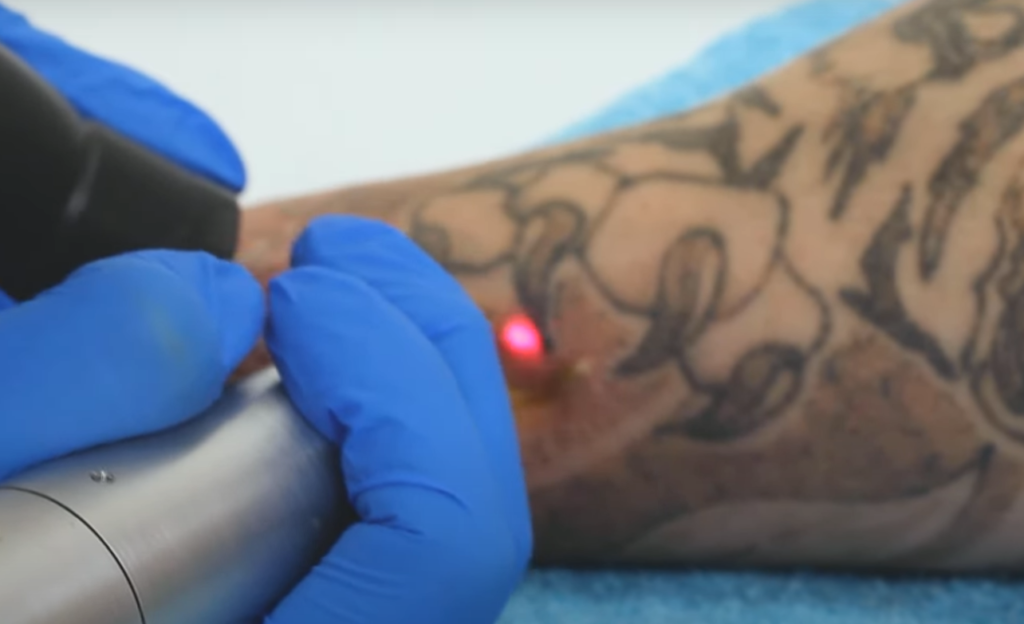
When the laser is applied to a tattoo, it delivers tiny bursts of energy that break up the pigment particles into smaller fragments. The body’s lymphatic system then carries away these fragments and eventually removes them completely from your skin. [1]
Targeting Tattoo Ink
In general, black ink is usually removed within five to ten treatments while brighter colors, such as red and yellow, can take up to fifteen or twenty treatments. It is important to note that tattoos inked with newer technology may also require more sessions than traditional ones. [1]
The Immune System’s Work
Once the laser has broken up the ink, your body’s immune system will take over to clear away the particles. The amount of time it takes for this process to occur depends on several factors, including your age and health.
Younger people with a healthy immune system may be able to remove tattoos more quickly than older people or those with weakened immune systems. It is important to discuss any concerns you have in regard to your skin health and tattoo removal process with a certified technician before starting the treatment. [1]
What Can You Expect From the Process?
The process of tattoo removal can be broken down into several steps. The first step is to consult with a professional and discuss the options available for removal. This includes discussing the size, type, and location of the tattoo as well as any medical conditions that may affect its removal. Once these details are settled, it’s time to begin the process of tattoo removal.
The second step is to decide the method and strength of the laser treatment that will be used. Laser treatments range from lower-intensity options like Q-switched lasers to higher-intensity ones such as a Neodymium YAG or Picosecond laser. Each type has its own advantages and disadvantages which should be discussed with the professional performing the treatment.
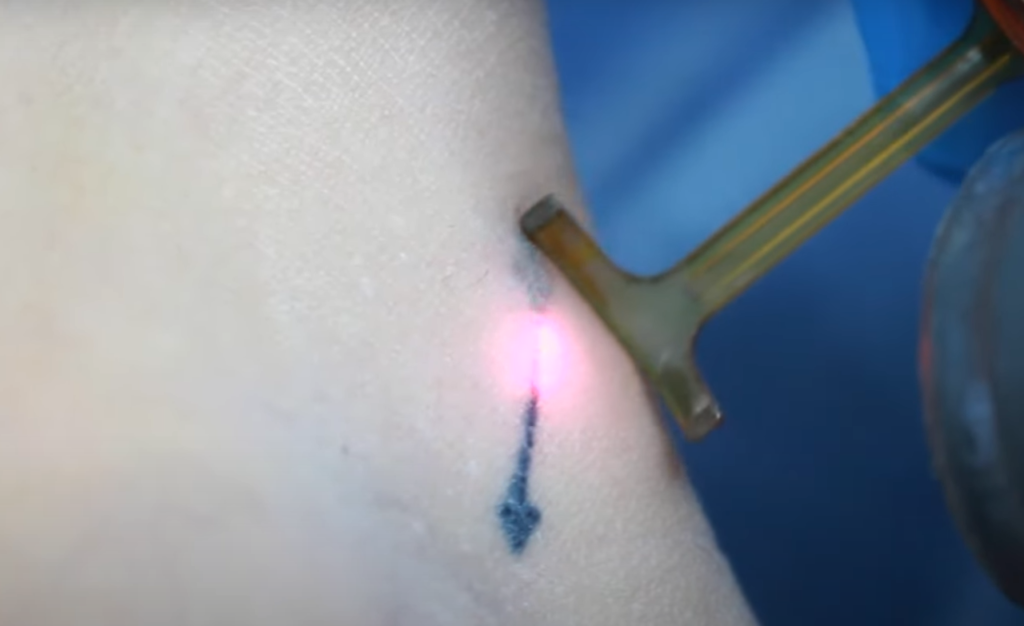
The last step is to prepare for the tattoo removal treatment session. This includes informing your doctor of any medical conditions or medications you may be taking, and choosing what type of numbing cream will be used during the procedure. [1]
Why Does the Ink Take Time to Remove?
Your Immune System Can’t Get Rid of Tattoo Ink on Its Own
Tattoos are meant to be permanent, which is why it takes time and a bit of effort to get rid of them. Tattoo ink is inserted deep into the skin, making it difficult for your body to naturally remove it. The process involves breaking the ink down into tiny particles that can then be absorbed by your immune system over time and eventually flushed out of your body. This means that depending on the size, age, and color of your tattoo, it can take anywhere from weeks to years for your body to completely remove all traces of it. [2]
Laser Treatments Need Time to Work With Your Body
The most effective way to remove a tattoo is to use laser treatments. The laser emits short pulses of light energy that break up the ink particles and allow your body’s immune system to absorb them. However, these treatments need time to work with your body’s natural healing process in order for it to be successful. Generally, it will take a series of treatments to fully remove the tattoo, so it is important to be patient and follow your doctor’s advice. [2]
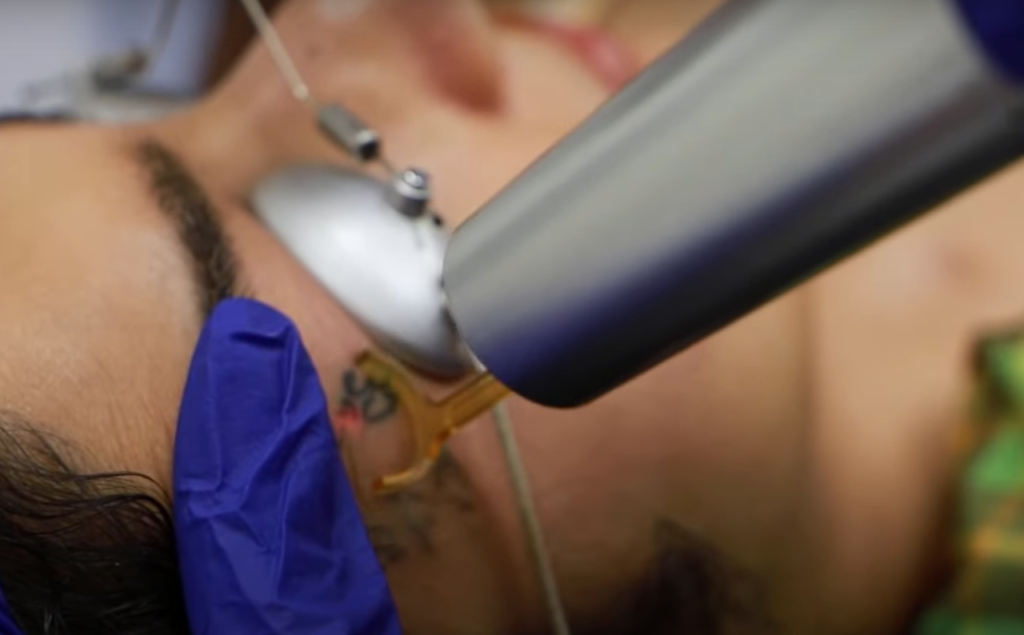
How Can You Accelerate the Process?
Although there is no way to speed up the complete removal process, there are a few things you can do to help expedite it:
- First, make sure you are following all of your doctor’s instructions carefully and precisely — this includes keeping the tattoo area clean, wearing clothing that won’t irritate or rub against the area, and using the aftercare products that your tattoo removal specialist has recommended;
- Also, if you are undergoing laser treatment, take any medications as prescribed to help reduce pain or swelling. Avoiding exposure to the sun is also essential since UV light can interfere with the tattoo removal process and cause it to take longer;
- Finally, it can be helpful to stay on track with treatment schedules. For example, if you are having laser treatments done, make sure that you attend all of your scheduled appointments and wait the full recommended amount of time between each appointment. Doing so helps ensure that the tattoo removal process progresses quickly and effectively [12];
The Benefits of Laser Tattoo Removal
You Can Be Free of a Design You No Longer Like
Tattoos can be beautiful and meaningful works of art, but sometimes there are designs that you no longer want on your body. Laser tattoo removal is the best way to get rid of an unwanted design for good. [2]
You Can Alter a Tattoo More Easily
Not only can you get rid of a tattoo completely, but laser treatment is also effective for changing or altering an existing design. For example, if you have a tattoo that has faded over time and needs to be touched up, laser treatment can help restore the original look and colors. It’s also possible to use laser treatments to add elements to an existing design. [2]
You Can Enjoy a Safe, Effective Process
You Can Enjoy Quicker Results
Laser treatments are much quicker than traditional tattoo removal methods. Depending on the size of your tattoo, most laser treatments can be completed in a few sessions, with each session taking around 15-20 minutes. In comparison, dermabrasion or surgical excision can take up to several hours to complete. [2]
You Can Save Money
Laser treatments are often more cost-effective than traditional tattoo removals methods, such as dermabrasion or surgical excision. Laser treatments can usually be completed in a few sessions, which often costs less money overall than the multiple appointments that would be needed to finish treatment with other methods. Additionally, traditional tattoo removal methods often require more follow-up visits for aftercare and can lead to more expensive medical bills. [2]
FAQ
How quickly can you get a tattoo removed?
The time it takes to remove a tattoo can vary greatly depending on the size, type of ink used, and location of the tattoo. Generally speaking, small tattoos are easier to remove than larger ones and take less time.
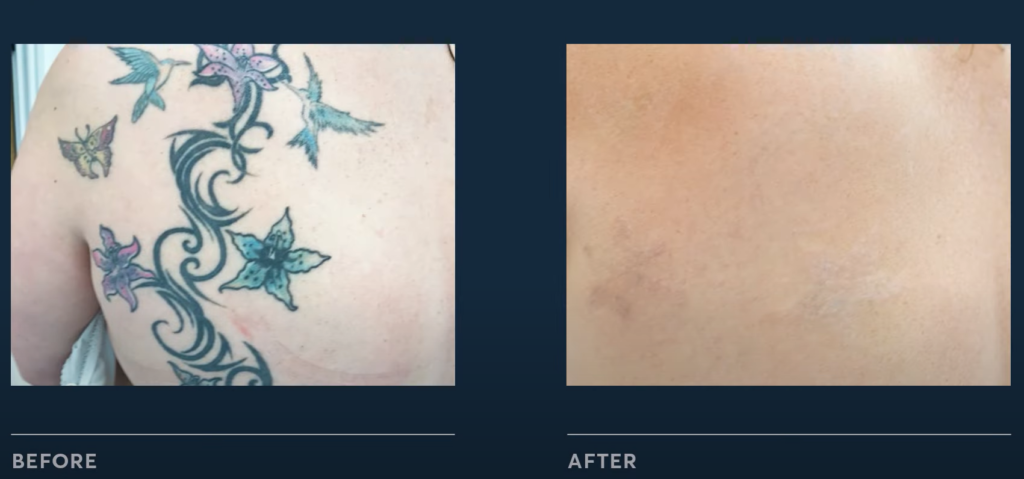
On average, expect around 6-12 treatments spread out over several months to achieve full removal. Smaller tattoos may require fewer treatments, while more intricate designs may require additional sessions. Additionally, some people may require fewer treatments than others depending on the type of ink used in the tattoo and individual healing rates. Your technician will be able to provide you with an estimated timeline for removal once they have examined your tattoo.
How long does it take to remove a 2-inch tattoo?
Typically, a 2-inch tattoo may take between 8-12 treatments to fully remove. As mentioned above, the number of treatments needed can vary widely depending on the type of ink used and the individual healing rate. Your tattoo removal technician will be able to give you an estimate once they have seen your tattoo in person.
Can a tattoo be removed completely?
Yes, it is possible to completely remove a tattoo with the right combination of treatments. It’s important to bear in mind that the removal process may not completely erase all traces of your tattoo and some marks may still be visible after treatment. Depending on your skin type, age, and lifestyle habits like sun exposure, tattoos can take longer to remove. Your technician will be able to provide you with an estimate of how long it may take to fully remove your tattoo.
How painful is tattoo removal?
Tattoo removal can cause some discomfort depending on the size and location of the tattoo, but most people find it tolerable. At each session, your technician will apply a numbing cream to help reduce any pain or discomfort during the treatment. Additionally, they may use an ice pack or cold air machine to help reduce any swelling after treatment.
How can I speed up tattoo removal?
There are a few ways you can help speed up your tattoo removal process. One of the most important is to make sure you follow all pre-treatment and post-treatment instructions given by your technician. This includes avoiding sun exposure, exfoliating gently, and moisturizing regularly. In addition, staying hydrated, eating a balanced diet, and exercising regularly can also help your skin heal faster. Following a healthy lifestyle can help expedite the removal process and prevent any complications.
Is it expensive to remove a tattoo?
The cost of tattoo removal can vary depending on the size, location, and type of ink used in the tattoo. Generally speaking, smaller tattoos are less expensive to remove than larger ones. Additionally, different laser technologies may also affect the cost of treatment. It’s best to contact a technician to get an accurate estimate for your specific situation.
Does tattoo removal leave scars?
In some cases, laser tattoo removal can cause scarring. However, this is usually minimal if you follow your technician’s post-treatment instructions. To help minimize any potential scarring, it’s important to avoid picking or scratching at the treated area and keep it moisturized. Your technician will be able to give you more information on how to care for your skin after treatment.
Do tattoo removal creams work?
Tattoo removal creams are not effective for removing tattoos. They may be able to lighten the tattoo over time, but this can take years and can often cause more skin damage than laser treatments. For best results, it’s recommended that you seek professional laser tattoo removal services from a qualified technician.
How much does it cost to remove a 2-inch tattoo?
The cost to remove a 2-inch tattoo can vary depending on the size, placement, and type of ink used in the tattoo. Generally speaking, it is more expensive to remove larger tattoos than smaller ones due to the increased number of treatments required. It’s best to contact your technician for an accurate estimate before beginning treatment.
Useful Video: Practitioner Debunks 10 Myths About Laser Tattoo Removal
Conclusion
Tattoo removal is a long process and may take several months or even years to complete. It’s important to use the correct laser type and settings, as well as follow your doctor’s instructions for aftercare in order to achieve the best results. Additionally, it is important to find an experienced and qualified tattoo removal specialist who will be able to provide you with the best care possible. With patience and perseverance, you can have your tattoos removed with minimal scarring. Good luck in your tattoo removal journey!
References:
- https://stillwatersmedspa.com/how-long-does-it-take-to-get-laser-tattoo-removal/
- https://franklinlaser.com/blog/laser-tattoo-removal-how-long-does-it-take-to-see-results/



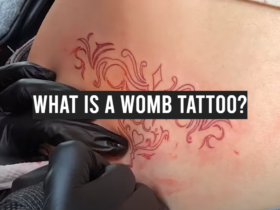

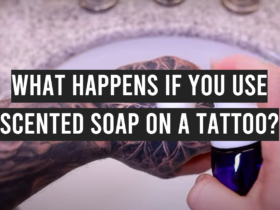
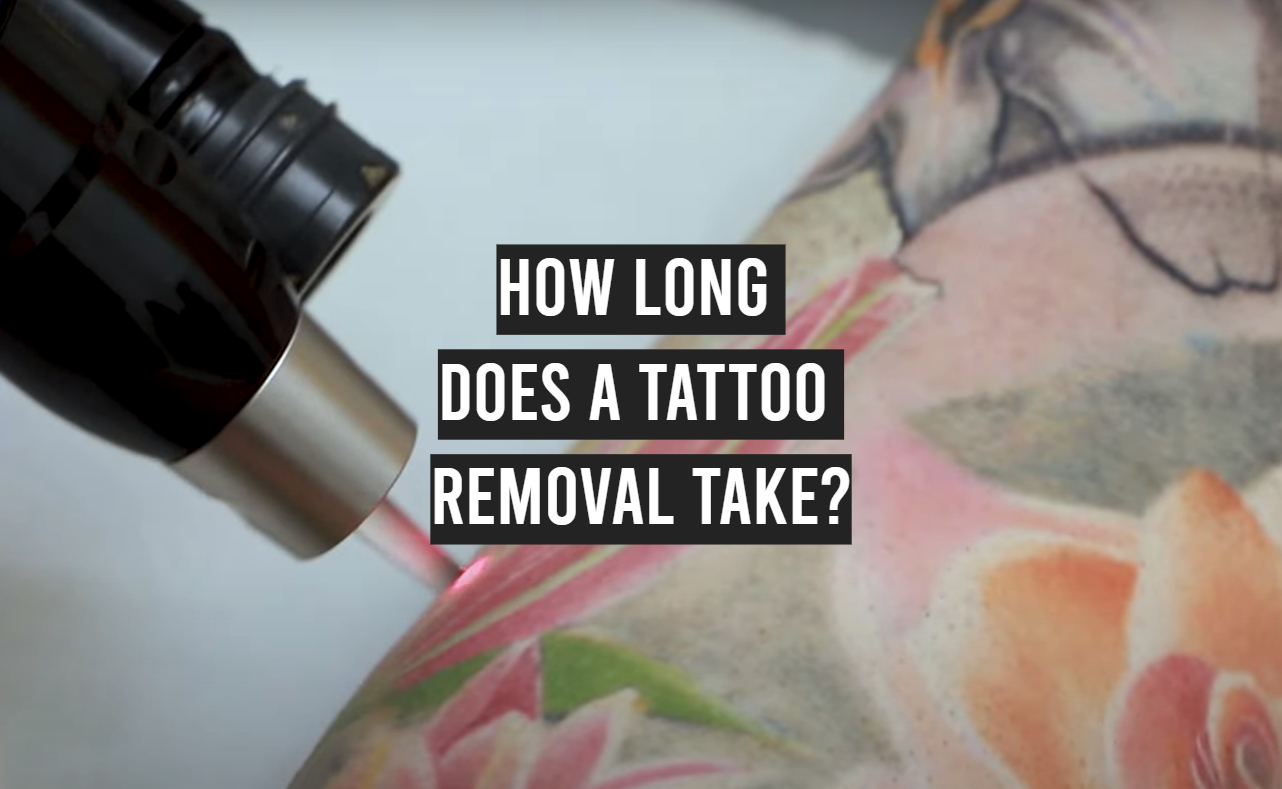

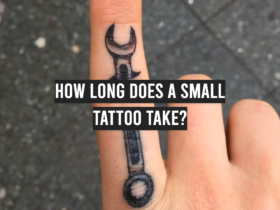


Leave a Review